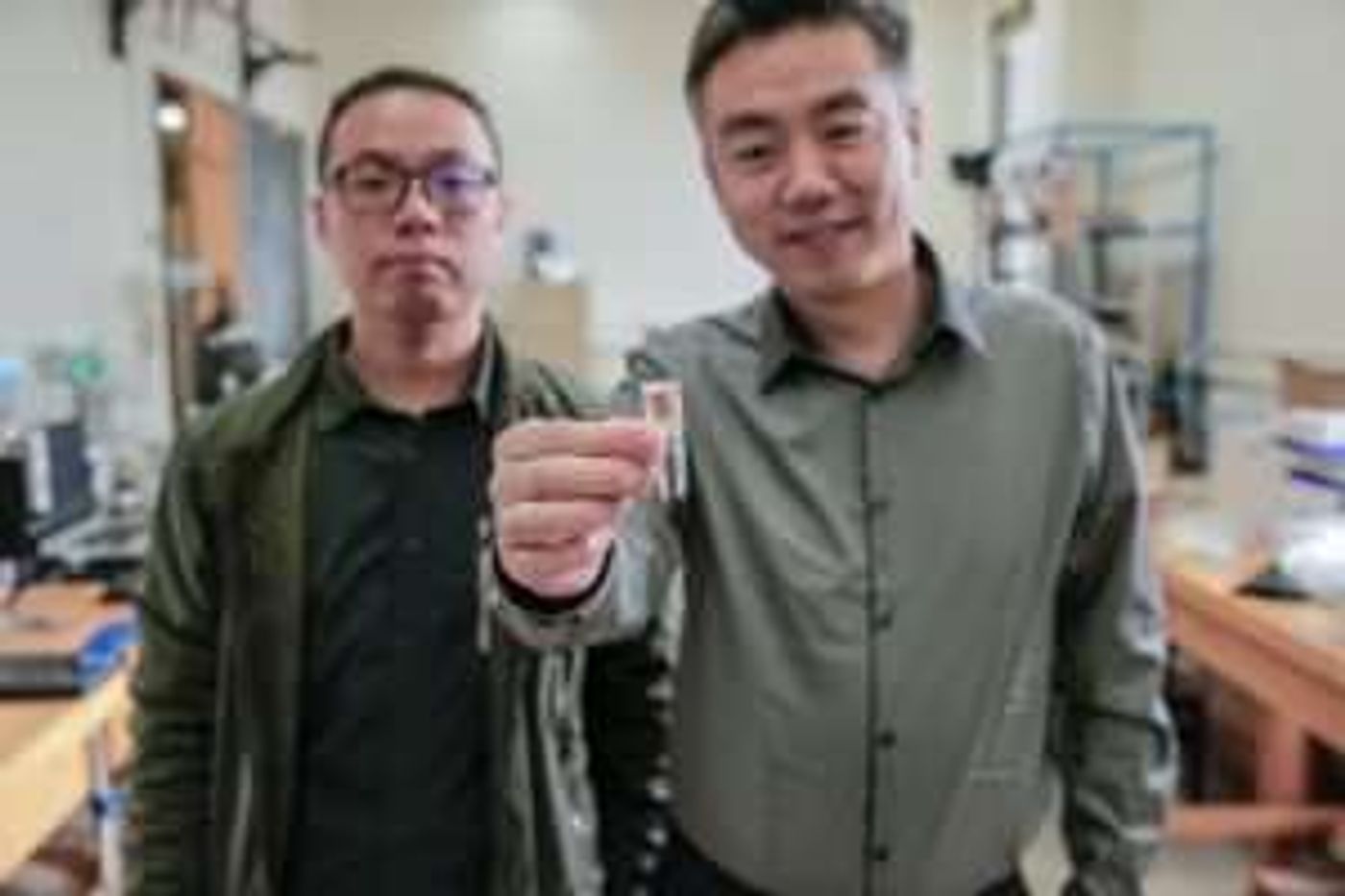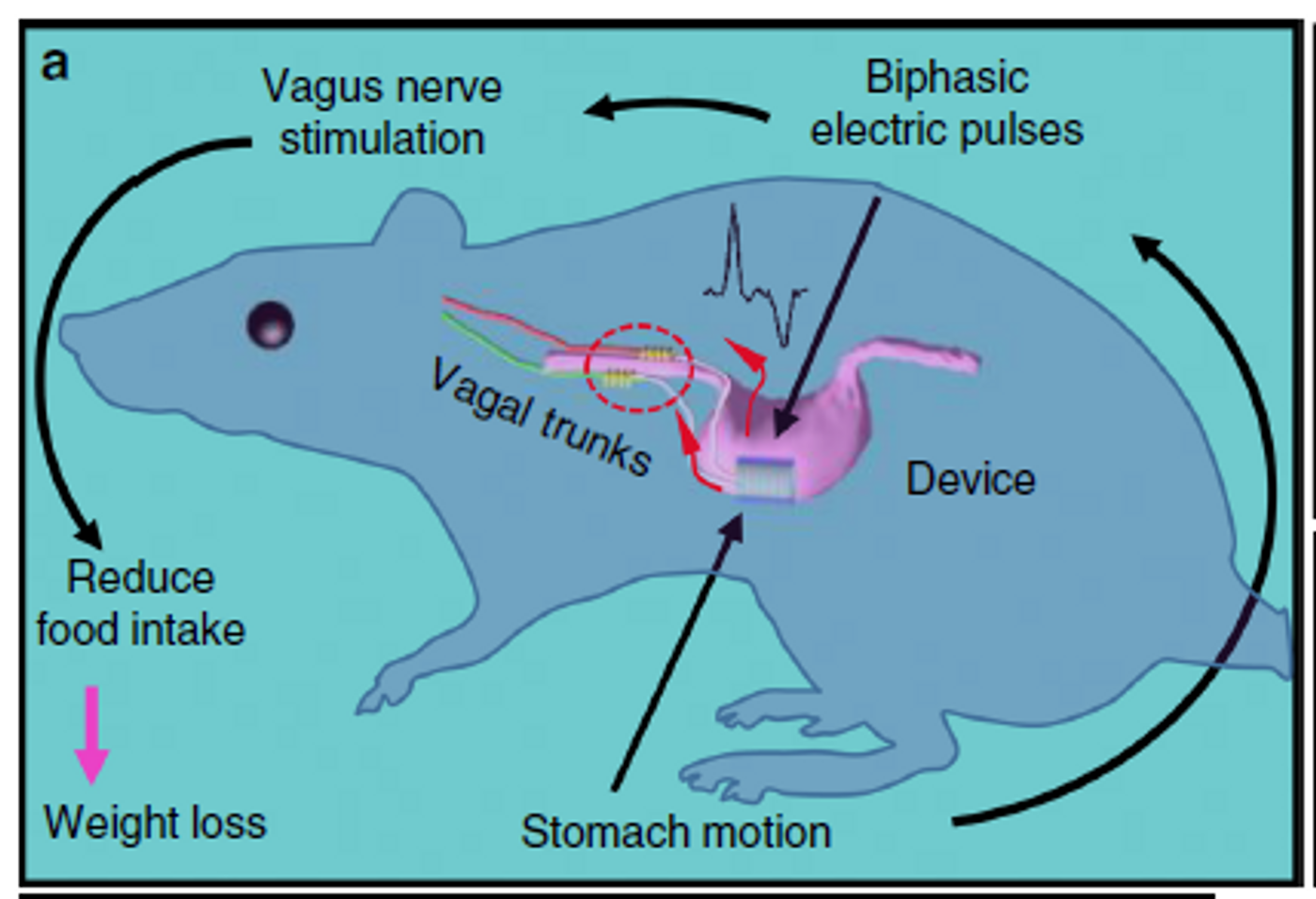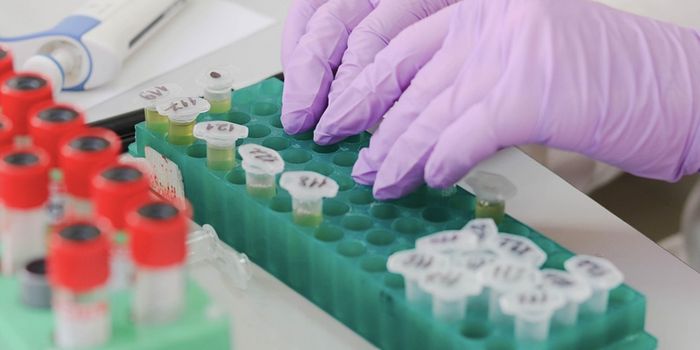Zapping the Vagus Nerve for Weight Loss Becomes Smaller
Trying to lose weight for the Christmas party and indulging in those festive treats without the bulge is still an uphill battle. Obesity is a globally growing pandemic and is multifaceted. Implementing the strategies that shed the extra weight is always challenging.
Engineers at the University of Wisconsin-Madison might have a solution that does not involve popping pills or ineffective sweating in gyms. The radical approach focuses on modulating the neural activity to regulate the food intake with a fully-implantable small wireless stimulation device. In laboratory testing, the devices helped rats shed almost 40 percent of their body weight. Results of the study were published today (Dec. 17, 2018) in the journal Nature Communications.
Graduate student Guang Yao (left) and Xudong Wang (right) hold a small implantable device that helped rats lose 40 percent of their body weights. Photo credit: Sam Million-Weaver, University of Wisconsin-Madison.
Measuring less than 1 centimeter across, or about a third of the area of a U.S. penny, the tiny devices—which are safe for use in the body and implantable via a minimally invasive procedure—generate gentle electric pulses from the stomach's natural churning motions and deliver them to the vagus nerve, which links the brain and the stomach. Relaying the neural activity that conveys satiety information to the brain could be the ultimate portion control.
"The pulses correlate with the stomach's motions, enhancing a natural response to help control food intake," says Xudong Wang, a UW-Madison professor of materials science and engineering. The operation principle of the correlated VNS system is schematically showing the pathway for biphasic electric signal generation and vagus nerve stimulation shown below.
Photo credit: Yao et al., 2018 Nature Communications
Unlike gastric bypass, which permanently alters the capacity of the stomach, the effects of the new devices also are reversible. When Wang and his collaborators removed the devices after 12 weeks, the study's rats resumed their normal eating patterns, and weight bounced right back on.
Targeting the nerves for the treatment of obesity is not novel, there exists a vagal nerve stimulation device approved by the FDA, “Maestro” that is clinic since 2015. However, the Maestro focuses on blocking all neural activity between the stomach and brain at all times of the day, as the treatment strategy. This involves, complex instrumentation and huge energy requirements for the stimulus delivery needs bulky batteries on board, resulting in a large device. See the video below to know more about the maestro vBlock therapeutic approach.
That ongoing maintenance can be a big barrier to use, says Luke Funk, a surgery professor in UW-Madison's Division of Minimally Invasive, Foregut, and Bariatric Surgery. "One potential advantage of the new device over existing vagus nerve stimulators is that it does not require external battery charging, which is a significant advantage when you consider the inconvenience that patients experience when having to charge a battery multiple times a week for an hour or so."
In fact, Wang's device contains no batteries, no electronics, and no complicated wiring. It relies instead on the undulations of the stomach walls to power its internal generators.
That means the device only stimulates the vagus nerve when the stomach moves. "It's automatically responsive to our body function, producing stimulation when needed," says Wang. "Our body knows best."
Wang is a world expert in wearable and implantable capacitive electricity-generating devices, having previously created implantable nanogenerators that harvest energy from people's beating hearts and breathing, a motion-powered bandage for wound healing, and other such devices.
He and his collaborators patented the weight-loss device through the Wisconsin Alumni Research Foundation and are moving forward with testing in larger animal models. If successful, they hope to move toward human trials.
"We expect that the device will be more effective and convenient to use than other technologies," says Wang.
Sources: Nature Communications, University of Wisconsin-Madison.










